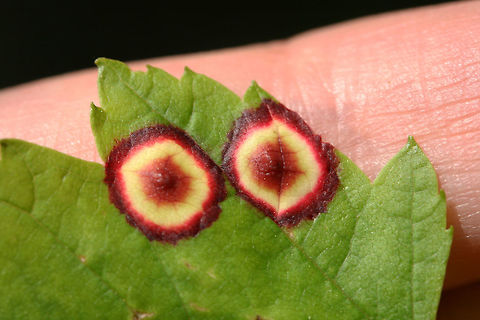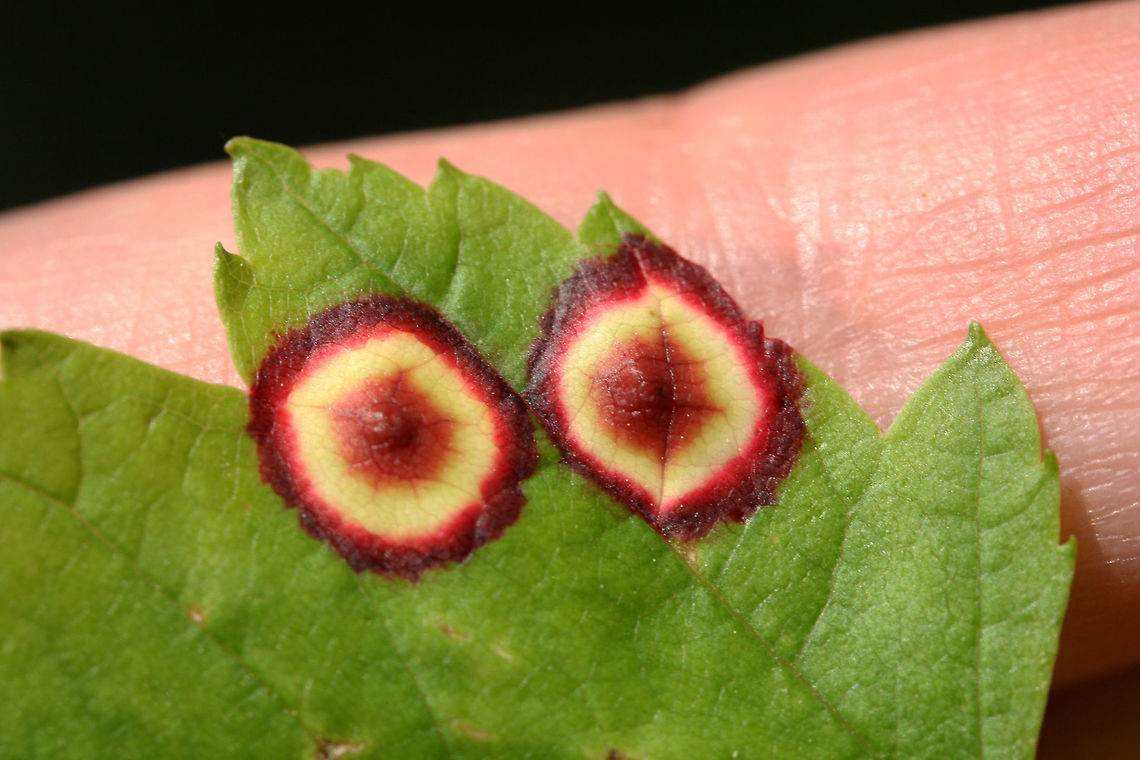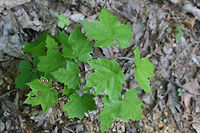
"Acericecis ocellaris", known generally as ocellate gall midge, is a species of gall midges in the family Cecidomyiidae. Other common names include the maple eyespot gall and maple leaf spot gall.
Similar species: True Flies
By Flown Kimmerling
All rights reserved
Uploaded May 3, 2018. Captured May 2, 2018 15:55 in 344 Carters Overlook Dr, Ranger, GA 30734, USA.




comments (4)
"Plant galls are abnormal outgrowths on plant tissues which result from injury, irritation, or stimulation of plant cells via mechanical damage or the injection of chemicals by an invading organism. While insects are the primary culprits, several galls are caused by bacterial, fungal, and nematode infections. They take on a variety of unusual shapes and colors and can be found on the leaves, flowers, roots, and stems of plants. These bizarre growths typically are not harmful to their hosts and only cause cosmetic defects. There are some exceptions to this as some gall species on wheat, roses, pears, and grapes are rather detrimental to plant health.
The majority of gall-forming insects are wasps, flies, or aphids, however, there are a plethora of others like midges, aphids, scale insects, psyllids, and weevils. Cynipid wasps make up the largest group with over a whopping 1400 species. These insects often specialize on one particular host plant, while a single plant may harbor multiple species. They can be differentiated by the color and morphology of the gall--and the host plant on which they occur.
Gall-forming insects are master plant manipulators, hijacking the plant's meristematic tissues and triggering rapid cell division and growth during oviposition or larval feeding (usually through the release of a chemical secretion or enzyme). This results in the formation of a gall, the perfect microhabitat for for insect larvae. Larvae take full advantage of these little "luxury hotels", feeding on plant tissues and avoiding predation and harsh weather conditions until they are ready to emerge as adults." Posted 6 years ago